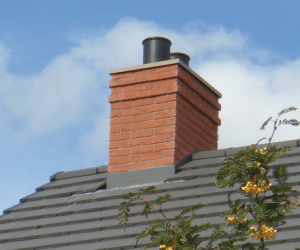 Surveying all it sees. Sitting proud above your house, a chimney is a distinct feature of many homes, and if you use a stove or gas fire or similar, it will be there to safely remove the smoke and gas produced by your appliance. It’s something you will probably never need to touch, consider or really pay much attention to.
Surveying all it sees. Sitting proud above your house, a chimney is a distinct feature of many homes, and if you use a stove or gas fire or similar, it will be there to safely remove the smoke and gas produced by your appliance. It’s something you will probably never need to touch, consider or really pay much attention to.
Or do you?
Chimneys need attention, care and they should be looked after. According to the National Association of Chimney Sweeps (NACS) UK fire statistics show that every year more than 30,000 houses suffer chimney fires. This will be mainly due to not getting the chimney swept often enough, or burning fuel that is not right for the appliance, which causes tar to build up in the chimney. Whats more, most insurance companies will not pay out for claims due to chimney fires, unless the chimney has been swept by a professional chimney sweep, and a valid certificate of sweeping has been issued.
What will be swept during a chimney sweep?
Most people will be aware that a chimney sweep will remove soot during a sweep. However, there are other things, which they can remove during a chimney sweep, which can include birds nests, cobwebs, dead birds, and general debris, which may have been deposited in a chimney over time. All of which, can increase the chances of a chimney fire happening.
When should my chimney be swept?
According to the National Association of Chimney Sweeps (NACS), the following guidelines should be considered when deciding when you should sweep your chimney:
.
- Smokeless Fuel: At least once a year
- Wood: Quarterly when in use
- Bituminous Coal: Quarterly when in use
- Oil: Once per year
- Gas: Once per year
Chimney structural damage:
Something less commonly spoken about with chimneys is structural damage, the reasons, and the impact such damage can have.
Smoke contains acidic compounds that can attack mortar and masonry, this can weaken the structure of a chimney over time. Combine this with general weathering, such as rain, and frost and cracking in the chimney can result. As you can imagine this can represent a serious issue with the structural integrity of a chimney. An easy way to avoid this damage to a chimney is to invest in a flue. A flue is a metal liner, which sits inside a chimney and acts as a liner to remove the gases and smoke from a fire.
A good quality flue should last at least 10 years, and is a great way to protect a chimney from smoke and gas attack – it can work out much cheaper in the long run. Replacing a flue can be a fraction of a cost when compared to complex and expensive chimney structural repairs. You can learn more about flues and liners in a past article we produced.
Typical causes of cracks and movement in brick masonry in chimney and flues:
- Improper construction: Failing to leave air space between flue line and masonry chimney sides – if the mason does not leave an expansion gap surrounding the clay flue liners as they are set into the chimney during construction, as the flue heats up during use, the expanding flue may crack the surrounding brick. This is know as thermal expansion cracking. Thermal cracking may produce thin, vertical cracks in a chimney. They often start off in the mortar and then can spread to the brick work.
. - Water leaks: At the chimney top (missing rain cap, faulty chimney cap top seal), or at the chimney sides (defective flashing, wind-blown rain, open mortar joints) can direct water into the chimney structure where, as mentioned above, in freezing climates frost can lead to cracks to the chimney itself or to its flue liner.
. - Chimney movement – A chimney, which is set on a poor foundation or a chimney, which was not secured correctly on construction may lean or bend. Over time this can lead to cracks that usually appear in the mortar joints.
. - Mechanical damage – A chimney may crack due to stresses such as a large mounted antenna, from an earthquake or from nearby site blasting, that over time, can cause movement of the chimney, and resulting in cracking.
.
Although it is unrealistic to expect that a typical homeowner will have an in-depth knowledge of chimneys. Having a basic understanding of the possible problems that chimneys can face, can help save costly repairs in the long term, and of course in the short term too, with things like being aware of chimney fires and the importance of having a chimney swept.








